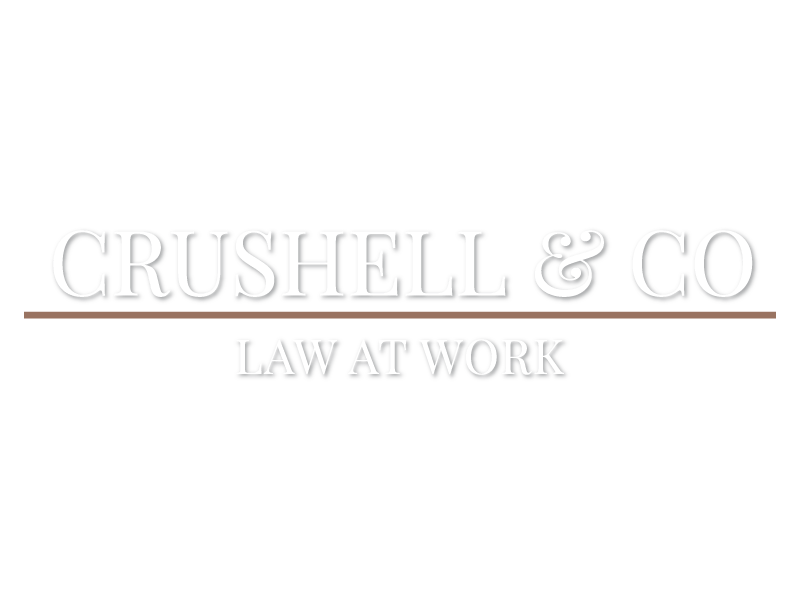Equality and Employer Liability - Starbucks Case
Employment Equality Law Resources:
Introduction
A recent case before the Workplace Relations Commission (WRC) (Suchavadee Foley v Atercin Liffey Unlimited T/A Starbucks Tallaght ADJ-00028487) considered whether a drawing on a coffee cup could convey a racial connotation.
The complainant, who is of Thai Irish heritage, and her boyfriend, attended the respondent Starbucks Tallaght branch for a matcha tea latte and some water. An employee drew an image of a smile and ‘slanty’ eyes on the cup as a way of marking it as the complainants. It was held by the WRC that this marking was a clear visual depiction relating to the race of the complainant, described as “offensive and as unimaginative as a 19th century Punch cartoon”.
However, could Starbucks Tallaght be held liable for the actions of their employee in this instance?
The Equal Status Act and Vicarious Liability
The Equal Status Act (the Act) prohibits discriminatory conduct on ten grounds in the provision of services or the disposal of goods, for example going for coffee. Included amongst the grounds is race, colour, nationality or ethnic or national origins. This encompasses a race or nationality imputed to a person.
Vicarious liability arises when one is held legally liable for a wrong committed by another person, for example, because one of your employees has committed a wrong in the course of their employment. The Equal Status Act provides that an employer is vicariously liable for prohibited conduct of their employee where this occurs in the course of their employment, even without the employer’s knowledge or approval.
Prohibited Conduct under the Equal Status Act
The Equal Status Act defines ‘prohibited conduct’ as including both discrimination and harassment. It prohibits discrimination, for example, a service provider refusing to provide a service to one group of people, for example, because of their race etc. The Act also prohibits harassment, including when a person avails of a service, for example buying a cup of tea.
In respect of harassment, section 11(2) identifies as the ‘responsible person’ as a person who 'is responsible for the operation of any place' and who 'shall not permit another person who has a right to be present in or to avail himself or herself of any facilities, goods or services provided at that place, to suffer sexual harassment or harassment at that place.' The responsible person here is the respondent, an operator of a coffee shop.
Section 11(4) provides that a person’s submission to unwanted conduct ‘may not be used by any other person as a basis for a decision affecting that person.’ A person’s submission or acquiescence to an act, therefore, does not mean that it was not harassment.
Section 11(5) defines ‘harassment’ as ‘unwanted conduct’ related to a discriminatory ground and which may have ‘the purpose or effect of violating a person’s dignity and creating an intimidating, hostile, degrading, humiliating or offensive environment for the person.’ This wording looks to the intention behind any unwanted conduct, but, separately, also to its effect. The section further provides that the unwanted conduct may consist of ‘acts, requests, spoken words, gestures or the production, display or circulation of written words, pictures or other material.’ A drawing on a cup was held by the WRC to clearly fall within this definition.
Defences of the Employer to Claim of Discrimination
Section 11(3) of the Act provides as a defence that the responsible person took ‘such steps as are reasonably practicable to prevent the sexual harassment or harassment’.
Starbucks Tallaght held that it could avail of the defence under section 42(3) of the Act as it had provided training to staff.
The respondent acknowledged that discrimination was not always conscious, relying on Nevins, Murphy, Flood v Portroe Stevedores [2005] 16 ELR 282. The respondent said that the CCTV footage showed that this was a benign incident, and this was an independent source of evidence. The complainant had not been treated less favourably and others would have drawings composed of them. In this case, the drawing was positive as it was motivated by the employee thinking the complainant was glamourous.
The respondent referred to the burden of proof in equality complaints, as described by Advocate General Mengozzi in Meister C-140/10. This described the burden of proof as ‘a measure of balance is maintained between the parties, enabling the complainant to claim his or her right to equal treatment but preventing proceedings from being brought against a respondent solely on the basis of the complainant’s assertions.’ There were subjective and objective elements to the test.
Relying on Smith v Ombudsman [2020] IEHC 51, the respondent submitted that animus should be present but there was no evidence of animus in this case.
The respondent, Starbucks Tallaght, referred to the defence available to an employer pursuant to section 42(3). It was a defence for an employer to show that it took the ‘reasonably practicable’ steps to prevent employee’s act. It referred to its harassment policy and the training. It stated that this did not have to be perfect. Referring to the Labour Court authority of McCamley v Dublin Bus EDA 164, the respondent submitted that the training was comprehensive enough to protect the employer from liability. It commented that it had a diverse workforce, including Asian colleagues.
Determination of the WRC
The WRC found that the respondent was not entitled to rely on the statutory defences. It held that this incident stems from the well-established practice of writing on the cup to identify the customer. It is generally the customer’s name, but staff sometimes struggle to spell names correctly, for example, an unfamiliar name or for language reasons. The staff member can also draw on the cup. This is an important interaction as the point of identifying the cup is to personalise the customer experience. It, therefore, requires care to ensure that the personalisation is appropriate. While there is customer service training and a harassment policy, the WRC was not satisfied that Starbucks Tallaght provided sufficient information to staff about the power of drawings and pictures, and that what’s important, is how they are perceived.
Starbucks Tallaght was ordered to pay Ms. Suchavadee Foley €12,000 as compensation for the effects of the prohibited conduct.
Share








